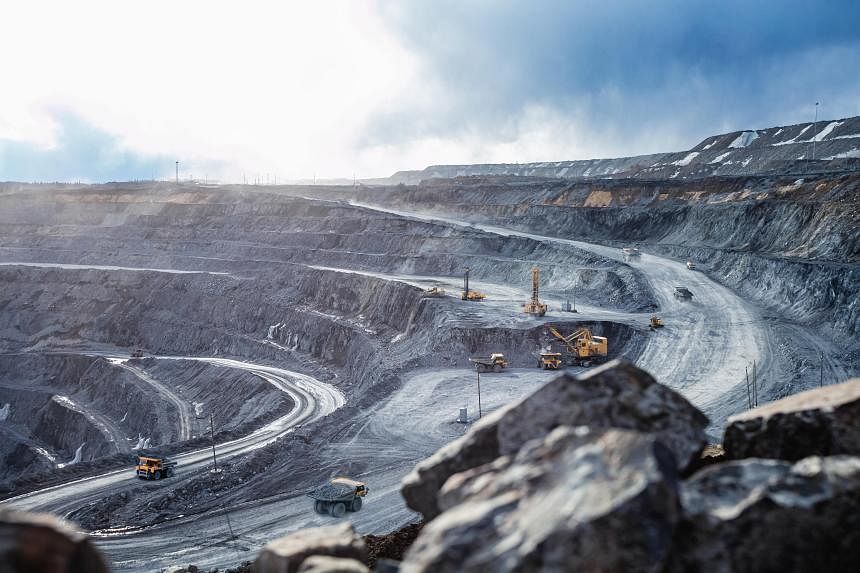SINGAPORE – Humanity’s voracious appetite for resources, from food and fuel to metals and gravel, is pushing the planet to its limits by accelerating climate change, biodiversity loss and pollution, a major United Nations report says, calling for urgent action for societies to live within their means.
A growing global population, consumer lifestyles and rising demand for food, especially animal-based diets, are the main drivers of the spiralling demand for resources, the UN Environment Programme (UNEP) says in its Global Resource Outlook report released on March 1. The Asia-Pacific is a major driver of booming resource use.
“The triple planetary crisis of climate change, nature loss and pollution is driven from a crisis of unsustainable consumption and production. We must work with nature, instead of merely exploiting it,” said UNEP executive director Inger Andersen.
The report looks at the consumption of biomass, such as agriculture and forestry, fossil fuels, metal ores and non-metallic minerals, such as gravel, sand and clay.
Material resource use since 1970 has grown from 30 billion tonnes to a projected 106.6 billion tonnes in 2024 – or from 23kg to 39kg of materials used on average per person per day. Over the past 20 years, rising affluence explains 40 per cent of the global increase in material extraction, while population growth contributed to 27 per cent, the report says.
High-income countries are a leading source of demand, using six times more materials per capita, and are responsible for 10 times more climate impacts per capita than low-income countries.
“Without urgent and concerted action to change the way resources are used, resource extraction could increase almost 60 per cent by 2060 as compared to 2020 levels”, to 160 billion tonnes, the report adds.
The extraction and processing of resources now account for more than 55 per cent of greenhouse gas emissions, it says.
Infrastructure and commercial and residential building construction are major drivers of resource use. The use of sand, gravel, clay and other minerals for industrial applications such as concrete is the largest component of material use. Extraction of these quintupled, from 9.6 billion tonnes in 1970 to a projected 45.3 billion tonnes in 2024.
And that is likely to keep growing as cities keep expanding.
By 2050, cities are expected to be home to more than two-thirds of the world’s population. By one estimate, the world will add more than 2 trillion sq ft of buildings by 2060 – the equivalent of adding the floor space of New York City every month until then.
Regional consumption patterns have also shifted. In 1970, Asia and the Pacific accounted for about a quarter of the global material consumption. By 2017, the region’s share had grown to almost 60 per cent.
Increased agricultural production has also led to a rise in water consumption and damaged or destroyed natural habitats.
“The report’s conclusions are alarming but won’t be surprising to anyone who has been witnessing the decline of biodiversity globally over recent decades,” said Mr Thomas Brzostowski, interim Singapore country director for global conservation group The Nature Conservancy.
“What the report makes even more clear is that the unsustainable consumption of natural resources threatens far more than biodiversity: It will ultimately undermine all aspects of human well-being if we can’t keep it under control,” he told The Straits Times.
He added that the world is at a critical juncture where immediate action is imperative. “We must prioritise conservation efforts, adopt sustainable consumption practices, and advocate policies that promote responsible resource management.”
The UNEP report spells out a series of solutions to halt and reverse the rapid growth in resource use. It rejects the assumption that meeting essential human needs should be resource-intensive.
Reducing animal protein in diets and cutting food loss and waste can decrease the land area needed for food by 5 per cent by 2060 compared with 2020 levels, while ensuring adequate nutrition for all.
Compact neighbourhoods that encourage more walking and cycling, use of more recycled building content, retrofitting the existing building stock to make it more sustainable, plus more intensive use of buildings, can cut demand for building materials and lead to a 30 per cent decrease in greenhouse gas emissions compared with current trends.
The report recommends channelling private finance towards sustainable resource use and repurposing subsidies that encourage resource extraction and directing them towards greener policies.
Taxes on carbon emissions and policies that encourage reducing the use of resources, eco-friendly design, reuse of materials, repair, refurbishment and recycling are also vital.
Singapore, for example, has a carbon tax, plus policies that discourage plastic bag use and promote recycling, and has a joint initiative by the Government, industry and non-governmental groups to reduce packaging waste.
A separate UNEP report released on Feb 28 says the world generated 2.3 billion tonnes of municipal waste in 2023.
And the pile of rubbish could grow another two-thirds by 2050 to 3.8 billion tonnes, with projections suggesting the greatest growth in rubbish will be in regions that currently rely on open dumping and burning – practices that emit greenhouse gases, and leach toxic chemicals into soils, waterways and the air, the report says.
It says the “hidden costs” linked to poor waste disposal totalled about US$361 billion (S$486 billion) in 2020.



